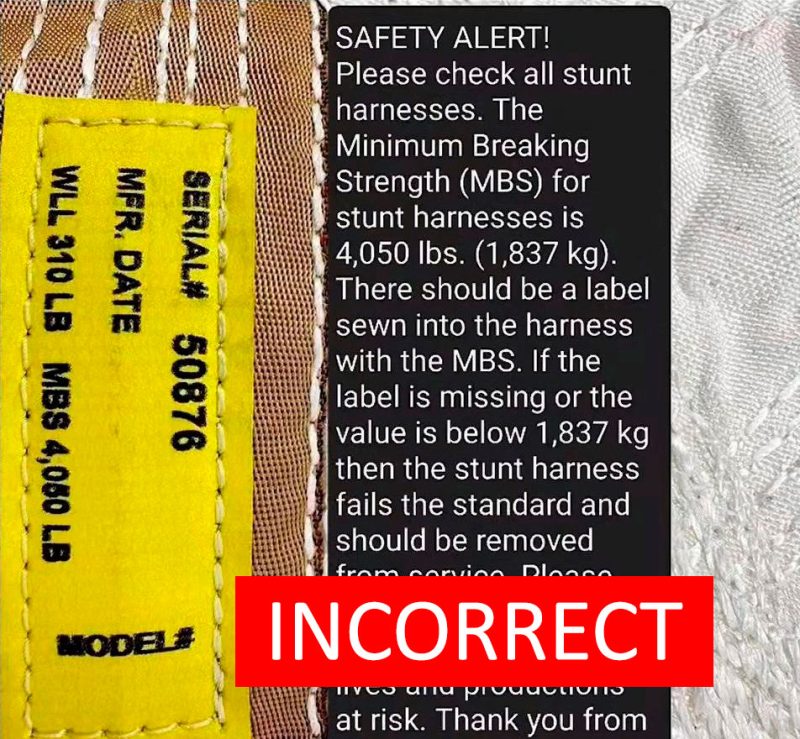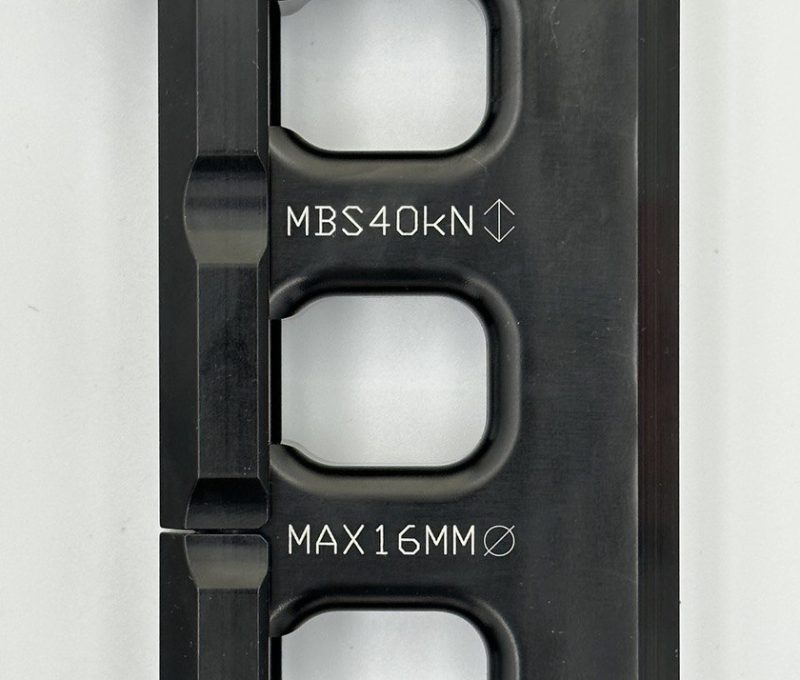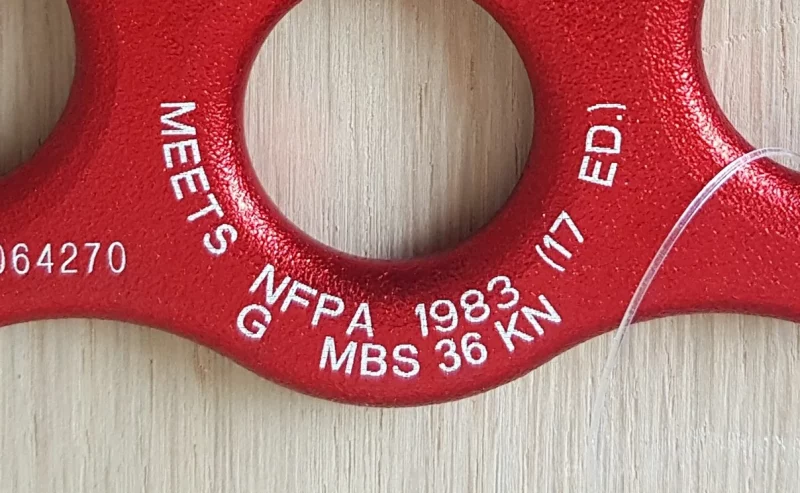MBS
Breaking strength, often shortened to MBS, is a self-explanatory term relating to the load at which a product fails, like a harness or carabiner. Alternatively, this value is often defined as the minimum force a product must withstand before failure. As we know force is measured in Newtons.
In climbing, rope access, rescue industries MBS is measured in kN.
We still can see MBS in pounds for lifting equipment especially in USA. It might be still ok because lifting is working with gravity and only for static lifting and moving operations. But let’s find out why it’s wrong for climbing or stunt rigging.
You can’t use units of mass to describe the force. Because even static load under gravity transform mass to weight. What is the difference between mass and weight is described here: Difference between mass and weight
Example
If you have suspended object with the mass of 100kg then you have 981 Newton of weight.
Weight describes the force that a mass, influenced by gravity, applies to a surface and it is measured in Newtons (N).
Kg is unit of mass, while Newton is unit of Force
While you weighs the thing that is measured is the normal force exerted by the weighing machine, which is same as gravitational pull on you. Gravitational forces are considered to be inherently linked to what we call ‘mass’. The gravitational pull on you is mass multiply by gravity (m*g), which have units of Newton.
It means that when the speed of the object is increasing the force is increasing too when the mass of the object stays the same.
So it’s necessary to use kN of force instead of kg/lb of mass if we need to measure the load for:
- any force acting in different to gravity direction;
- dynamic load during climbing fall, descent, ratchet pull etc.;
- conditions when other factors involved (friction, environment).
Minimum breaking strength is established by series of tests. The accurate way to get MBS is to use 3 sigma method.
MBS is usually written on the product or its certificate.
The unit kilogram-force (kgf) or pound-force (lbf) is equal to a mass of one kilogram/pound multiplied by the standard acceleration due to gravity on Earth.
| Newton [N] | Dekanewton [daN] | Kilonewton [kN] |
|---|---|---|
| 10 N | 1 daN | 0.01 kN |
| 100 N | 10 daN | 0.1 kN |
| 1000 N | 100 daN | 1 kN |
| 2000 N | 200 daN | 2 kN |
So for hanging object with the mass of 1kg we will achieve ~1daN pulling force.
Let’s see how force is changing when object is not static.
For example, here is the rope MBS according to EN 1891 standard:
The minimum breaking load for the rope describes the maximum force under straight pull a free length of rope can be exposed to until it breaks. It is specified in daN or kN. The minimum breaking load for ropes required under EN 1891A is 22kN.





